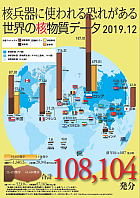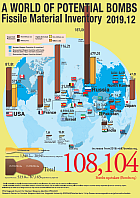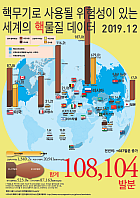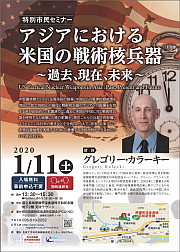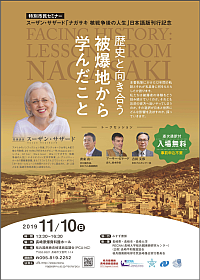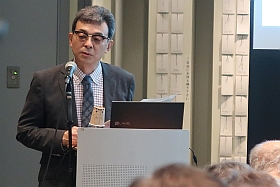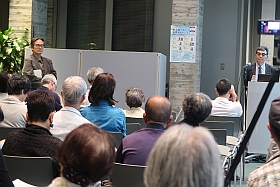2019年10月30日
| 日 時: |
2019年10月26日(土)13:30~15:30 |
| 場 所: |
国立長崎原爆死没者追悼平和祈念館 交流ラウンジ |
| 講 師: |
石田 謙二(長崎新聞社取締役編集局長/RECNA客員教授) |
| 聞き手: |
山口 響(RECNA客員研究員) |
| 主 催: |
核兵器廃絶長崎連絡協議会(PCU-NC) |
| 共 催: |
長崎大学核兵器廃絶研究センター(RECNA) |
| 講演する石田氏 |
石田氏と山口氏 |
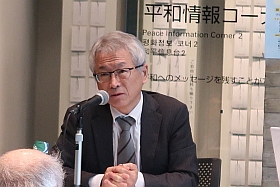 |
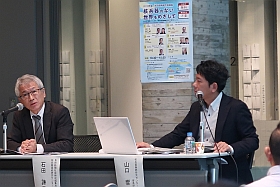 |
| 会場の様子 |
レクナと語ろう |
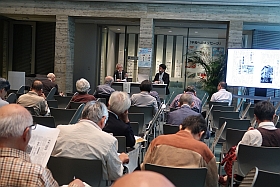 |
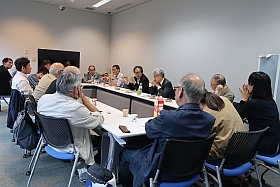 |
2019年度第4回となる核兵器廃絶市民講座「核兵器のない世界を目指して」が、10月26日(土)に国立長崎原爆死没者追悼平和祈念館交流ラウンジにて行われました。
「被爆地の新聞記者として」と題し石田 謙二 (長崎新聞社取締役編集局長/RECNA客員教授)が講師を務めました。
1981年に長崎新聞社に記者として入社された石田氏は、被爆40周年前後から原爆報道に本格的に取り組み始めました。ご講演では、長崎の被爆者や反核平和の動きをめぐる40年近い記者生活を振り返りながら、記者としての喜びやご苦労されたことなどを、山口響氏との対談形式で話されました。
最後に石田氏は、長崎のメディアと原爆報道全般の成果や問題点などについて言及され、今後の原爆報道のあり方についても意見を述べられました。
また質疑応答ではたくさんの質問が飛び交い、白熱した場面となりました。
講座には約60名の市民が集まり、講演後の「RECNAと語ろう」では、市民・学生による熱い意見交換が行われました。
※本講演会の内容は講演者及び対談者個人の意見を表すものであり、主催団体及び共催団体等の見解を示すものではありません。
>>2019年度の市民講座について
